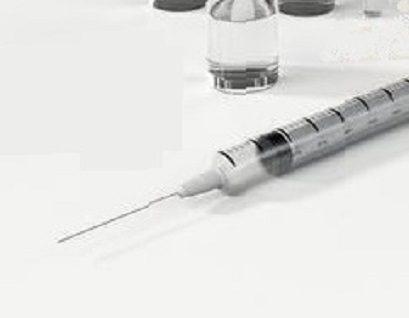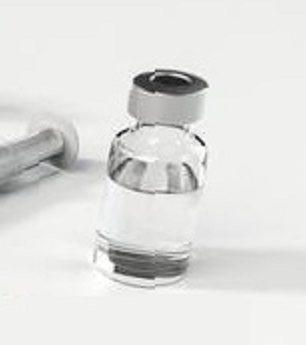Botulinum toxin, commonly known by its brand name Botox®, is a prescription medication used to treat a variety of medical conditions related to muscle spasms and overactive muscles. Botulinum toxin is produced by the bacterium Clostridium botulinum and works by blocking nerve impulses that trigger muscle contraction. When injected into a muscle, it temporarily paralyzes the muscle, reducing its activity and helping to relieve symptoms. How Does Botox and Clostridium Botulinum Toxin Work?
Botox was first approved by the US Food and Drug Administration (FDA) in 1989 for the treatment of strabismus (an eye muscle disorder) and blepharospasm (uncontrollable blinking). Since then, the FDA has approved Botox for the treatment of several other medical conditions, including cervical dystonia (a neck muscle disorder), excessive sweating (hyperhidrosis), chronic migraines, overactive bladder, and muscle spasms in the limbs (1). What is Botox made of?
One of the most popular uses of Botox is for cosmetic purposes, particularly for reducing the appearance of wrinkles and fine lines. When injected into the muscles that cause wrinkles, such as the forehead, crow’s feet, and frown lines, Botox can temporarily paralyze the muscles, resulting in a smoother, more youthful appearance. Botox is considered one of the most effective non-surgical cosmetic treatments for reducing the signs of aging (2).
Botox is typically administered as a simple, non-surgical injection. The injection process usually takes only a few minutes and does not require any anesthesia. The medication is injected into the muscle using a very fine needle, and multiple injections may be necessary for larger muscle groups. The effects of Botox typically become apparent within a few days to a week after the injection, and the results can last anywhere from three to six months.
Botox is a prescription medication and should only be administered by a qualified healthcare provider. Improper administration of Botox can result in serious side effects, including difficulty speaking, swallowing, or breathing. In rare cases, Botox injections can also spread from the injection site to other areas of the body, causing serious side effects (3)
Botox is not suitable for everyone. People with certain medical conditions, such as nerve or muscle disorders, allergies to botulinum toxin or any of the other ingredients in the medication, or a history of facial surgery or facial weakness, should not receive Botox injections. Pregnant and breastfeeding women should also avoid Botox injections (4) .
Competitors of Botox, Daxxify and Dysport been approved by FDA.
What is Botox?
The cosmetic products used for the procedure in your country may have a completely different name – Botox® is just one of them, among the other registered trademarks. Always look for drugs containing botulinum toxin and you will never get lost. In the United States, the substance is marketed under the brand names Botox®, Jeuveau®, Xeomin® and Myobloc® (1). What is Botox made of?
How does the botulinum toxin work?

Botulinum toxin falls under the category of so – called metalloproteinases – it is a group of enzymes that simply destroy specific proteins.(2) It allows the botulinum toxin to enter the nerve terminals communicating with the facial muscles and act further from there. Inside those nerve endings, it deactivates proteins called SNARE. SNARE, on the other hand, normally are responsible for acetylcholine release from the nerve terminals. In normal conditions acetylcholine is a transmitter that causes a muscle contraction, also in the face. Because of that, what the toxin finally achieves, is the blockage of acetylcholine release what leads to muscle paralysis. This is the reason it has been used as a bioterrorism agent. It is also effective to smooth out the skin of the face as well as reduce wrinkles since they are formed due to repetetive and regular contractions of facial muscles. (3) How Does Botox and Clostridium Botulinum Toxin Work.
When does botox start working?
Most commonly you will start seeing the results about 4 days post treatment, however you will have to wait from 10 to 14 days for the effects to be fully seen. (4) Then you can enjoy them 100%.
What does a Botox procedure look like?

Botulinum toxin injections are relatively quick and painless. They are often performed by cosmetic dermatology physicians. People literally do it during their lunch breaks. All you will be asked to do is calmly lay down and make specific facial expressions so that the doctor can mark the injection points in the correct manner. Then, you will be asked to relax your face, one or two itches and voilà – you’re done!
There is much faster recovery time compared to common cosmetic surgery procedures.
The Botox Procedure
There are over 7,000,000 procedures per year.Treatment with Botox is a non-surgical, chair-side procedure that takes about 10 minutes’ time. A specialist injects some amount of the filler directly into your facial muscles. Anesthesia may or may not be needed. The amount of pain one feels varies with the individual patients. Generally, a pricking sensation similar to a bug bite will be felt with slight pressure as the filler is injected. No rest is needed and you may go to work immediately after. Find Botox near you.
Which areas can be covered?
Botox treatment can be used to
- Eliminate the worry lines between eyebrows
- Get rid of the frown lines on the forehead
- Eradicate the wrinkles known as crow’s feet beside the eyes
- Remove the smoker lines around the mouth
- Lift up the eyebrows
- Reduce the neck bands
- Smoothen out the upper lip and chin.The amount of Botox you need
- Lip Flip procedure to make the lips look larger
Side Effects and Risks of Botox injections

Botox, like any medical treatment, is associated with certain risks and potential side effects. However, when administered properly by a qualified healthcare provider, Botox is considered safe and effective for the treatment of a variety of medical conditions.
Some of the most common side effects of Botox include mild pain or swelling at the injection site, headache, and temporary muscle weakness. These side effects are generally mild and go away on their own within a few days to a week.
In rare cases, Botox injections can result in more serious side effects, such as difficulty speaking, swallowing, or breathing. This can occur if the medication spreads from the injection site to other areas of the body, such as the eyes, mouth, or neck. A 2005 study has shown that the risk of adverse effects caused by the toxin is more likely with therapeutic use rather than the cosmetic use, corresponding to the higher therapeutic doses.
How much do Botox Injections Cost?
Botox References
- Centers for Disease Control and Prevention. “Botulism.” U.S. Department of Health and Human Services, Centers for Disease Control and Prevention, 2021, https://www.cdc.gov/botulism/index.html.
- Botulinum Toxin | Botox Injections – MedlinePlus
- BOTOX® Cosmetic (Boe-tox) (onabotulinumtoxinA) for Injection
I am really curious to see if patients adopt the new kid on the block,Daxxify, over Botox in the next few years. In some medical fields, patients are less reluctant to adopt new treatments just because of the newness factor and the unknowns about side effects et cetera. But with an injectable, the side effect profile is probably less than four other medical treatments. That’s one of the nice things about the cosmetic field is the lower profile of side effects.
Comments are closed.